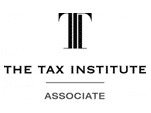While the nature and type of commercial transactions a self-managed superannuation fund (SMSF) can undertake with a related party are heavily restricted, the SIS Act does not prohibit all such transactions. However, such related-party transactions carry a risk of the ATO assessing the SMSF under the non-arm’s length income (NALI) rules in s 295-550 of the Income Tax Assessment Act 1997 (ITAA). This can result in the income and gains from the investment being taxed at the top marginal tax rate (45%) instead of the concessional tax rate of 15% for super funds (or 0% for a pension phase SMSF).
The key to preventing the application of the NALI provisions is to satisfy the ATO that any SMSF related-party dealings, where permitted, are established and maintained on strict arm’s length terms based on objective and supportable data. To this end, a valuation from a qualified and experienced independent valuer should be used to substantiate that any shares in a private company (or units in a trust) were acquired by the SMSF at market value (where permitted under the SIS Act). Also, the surrounding circumstances of the investment must support the arm’s length dealing.
This issue was highlighted recently in GYBW and FCT [2019] AATA 4262 (see below) where an SMSF trustee was unsuccessful in challenging a NALI assessment in relation to private company dividends received by the fund. As the SMSF trustee did not, amongst other things, obtain an independent valuation of the shares in the private company, it was unable to convince the AAT that the nominal price paid for the SMSF’s shareholding was an arm’s length market price.
AAT case GYBW and FCT
In GYBW and FCT [2019] AATA 4262 (reported at 2019 WTB 45 [1419]), a practising accountant (A) took up an offer from his longstanding client (C) to acquire 20% of C’s business for a nominal sum via the accountant’s SMSF. The investment proved successful and substantial franked dividends totalling over $2.56m were paid to the SMSF comprising Mr A and Mrs A as its only members. The SMSF returned this income as exempt current pension income (ECPI) for the 2013, 2014 and 2015 income years.
The Commissioner considered the purchase terms were uncommercial and applied the non-arm’s length income (NALI) provisions in s 295-550 of the ITAA 1997. The ATO imposed tax at the highest marginal rate and issued penalty assessments on the basis of recklessness at 50% and refused to remit shortfall interest charges. Although the SMSF was successful in remitting the penalties in full, the NALI assessments were upheld by the AAT.
Fact summary
C had a background in defence and was employed in a firm contracted to the Department of Defence (DOD). In 2006, C and some of his workmates commenced their own rival business for the repair and overhaul of Navy helicopter landing systems for DOD. C had limited financial skills or training and by inference relied heavily on A and the latter’s accounting practice in which A was a partner.
The business (although initially profitable) suffered and went southward in 2008 through to 2010. In mid-2010, the relationship between the principals of the business irretrievably broke down and C eventually bought them out, with all the assets and business liabilities transferred to a private company BE Pty Ltd (BECo). At 1 July 2011, C was its sole director and shareholder.
BECo net assets 17c
The balance sheet of BECo disclosed net assets of $0.17c at that time but substantial assets and matching liabilities of approximately $1.8m. The AAT was not satisfied that its net assets were only $0.17c, “at most the balance sheet is a purported record of the book value of the assets acquired and liabilities assumed by”…BECo on 1 July 2011. Like many private companies, no value was recorded for intangibles such as goodwill.
In August 2011, A advised C that he was contemplating retirement from his accounting practice. C asked A to become the Chief Financial Officer for the BECo business and offered him a 20% interest in it. C said as A was “going to look after the business finances and handle the money I wanted him to have ‘skin’ in the game and an incentive to do the right thing.” According to C, “I knew that the nominal value of the 20% interest in the business would be insufficient to incentivise [A] to join me. Therefore, in addition to the 20% interest, I paid A, a salary of over $200,000 (actually circa $243,000) to join as CFO.”
SMSF buys 20% of business – impugned transactions
A arranged to have his SMSF acquire the 20% interest in the business, as follows:
On 8 September 2011, B Holdings Pty Ltd (B Holdings) was incorporated with C as the sole director and C’s Family Trust as its sole shareholder. It acquired 800 B Holding ordinary shares for $800. The Fund acquired 200 ordinary shares in B Holdings for $200.
On 9 September 2011, the BECo shares were transferred to B Holdings for $200 (equal to the paid up value of the BE Pty Ltd shares). There were no retained profits recorded in the accounts of BECo and it became a wholly owned subsidiary of B Holdings.
True value of BECo business?
In September 2011, dark clouds further descended over the business and turnover and profits sharply diminished.
Shortly after the SMSF’s purchase of its 200 shares in B Holdings, “the heavens opened” for the BECo business due to misfortune experienced by the Navy. An entire helicopter landing system on a Naval ship was destroyed…and an existing system from another vessel had to be removed and reinstated on the first Naval ship. BECo received that contract for $6m in November 2011. DOD needed large unscheduled maintenance and BECo received a purchase order for $2.8m, and in April 2012, a further order for $4.6m to supply a new landing system kit. Further contracts ensued in May and June 2012 for over $5m. However, there were no long term or annual contracts with DOD.
The helicopter work diminished after the above deluge and the business successfully diversified into other areas. C denied diversification was contemplated on 9 September 2011 (when the SMSF acquired its 200 shares in B Holdings). On the contrary, the AAT found there was evidence to support at least some of the diversification endeavours were present although their success was uncertain. A shareholder’s agreement was signed in 2013, but dated 8 September 2011 which A asserted was the agreement made at that time albeit recorded in writing over 2 years later [hardly best practice].
Key goodwill provisions – shareholder’s agreement
Under the shareholder’s agreement in calculating the value of shares on exit, it stated:
“…the uncertainty of the Australian Government’s budget and decisions by the [DOD] in granting annual contracts for the company (which contracts constitutes the major portion of the company’s business)…(means)…that no figure for goodwill can be attributed in any sale…[of shares]…therefore the price of the shares on sale will remain the same as the issue price of the shares plus any after tax profits of the holding company and each of its subsidiaries that have not been distributed as dividends.”
Somewhat inconsistently, the shareholder’s agreement also imposed restraints against competition upon a shareholder’s exit – with the reasoning being to…”protect the goodwill and intellectual property of the business conducted by the company so as not to derogate from the company’s right to enjoy the full benefit of ownership of the business and its goodwill and intellectual property and the future value and return to the company”…
Fully franked dividends
Large fully franked dividends were paid by B Holdings to its shareholders proportionately to shareholdings between October 2012 and June 2015. The SMSF’s entitlement totalled over $2.56m (including franking credits). A not unattractive return for a $200 investment by the SMSF.
Valuation conundrum for small business
The SMSF had sought to establish that on 8 September 2011 the shares in B Holdings had no value beyond a nominal amount and hence the $200 paid to acquire 20% of B Holdings (and its subsidiary BECo) was commercial. C testified that “the business had the same amount of assets as liabilities and no guaranteed prospects of generating any future cashflows. I had no (and would not have agreed to any) contractual ties with the business. I could walk away whenever I wanted”.
Further, the business had “no standing offers, effectively no contracts and no forecast work and that even once the purchase order was received it could be cancelled. C’s oral evidence was at September 2011, although there were no standing offers or outstanding contracts, there were existing purchase orders on foot and “where – yes, we always had you know, contracts running, hopefully…the work was however “very sporadic”. Conversely, C’s evidence was also that the business had a reputation with [DOD]… as being specialists”. Whilst [DOD]…was the principal client of the business, it was not the only client…the customers included other contractors of the DOD and some minor clients outside the defence industry.
The AAT accepted that C “was a key element to the success of the business and absent his involvement, it would struggle. The AAT however rejected C’s statement that he could walk away from the business whenever he wanted as it found the same contrary to the terms of 2013 shareholder agreement which supported the opposite conclusion that C was committed to it.
SMSF’s submissions
The SMSF had sought to establish the fully franked dividends paid in respect of its 200 shares in B Holdings did not constitute “non-arm’s length income” under s 295-550(3) of the ITAA 1997 which then stated:
“In deciding whether an amount is consistent with an *arm’s length dealing under subsection (2), have regard to:
(a) the value of *shares in the company that are assets of the entity; and
(b) the cost to the entity of the shares on which the *dividend was paid; and
(c) the rate of that dividend; and
(d) whether the company has paid a dividend on other shares in the company and, if so, the rate of that dividend; and
(e) whether the company has issued any shares to the entity in satisfaction of a dividend paid by the company (or part of it) and, if so, the circumstances of the issue; and
(f) any other relevant matters.”
The SMSF argued that because all dividends paid on B Holding shares were proportionate, the share acquisition in B Holdings was an arm’s length dealing.
The AAT found that on 8 September 2011, the SMSF acquired its B Holding shares on the premise that, and only because, B Holdings was to become the holder of all the shares in BECo and did in fact become such holder on the following day by reason of a related party dealing between B Holdings and BECo (both controlled by C). The value of the B Holdings shares the SMSF acquired was intended to reflect the value of the BECo shares and confer a benefit on the SMSF because A was to become an employee of BECo.
Furthermore, the AAT said:
…”the probable profit which [BECo] may be reasonably expected to make in the future needed to be determined in light of all the facts. The evidence was that at September 2011, [C] intended to remain with the business. The business had a history of generating net cashflows, it was continuing as a going concern and whilst future cash flows may have been uncertain, it cannot be said that there was no expectation of any future cash flows at all in September 2011. It may be that the risk associated with future cash flows impacts the value of those cash flows but it does not follow that their value is necessarily nil or negligible.”
The AAT concluded that the SMSF trustee had failed to demonstrate that the market value of the shares in BECo when acquired by B Holdings in September 2011 were worth no more than a nominal amount. In particular, although the SMSF was not a party to B Holdings buying the shares in BECo (done by C), that occurred as part of an arrangement under which a benefit was intended to be conferred on A. The subscription for 200 shares for a sum of $200 by the SMSF in B Holdings was a matter related to A’s employment as CFO of the business, it being part of the same arrangement, whereby A became an employee of the business.
Accordingly, the AAT concluded that the source of the dividends paid by B Holdings in respect of the SMSF’s shares could not be divorced from the non-arm’s length transaction being B Holdings’ acquisition of the shares in BECo. The AAT held that the SMSF’s submissions concerning the value of the BECo shares failed to properly address the expected future profitability of the business and instead focused on the net asset value of the business.
Assistance from independent valuations
The AAT said a determination of whether parties were dealing at arm’s length is a question of fact and what is required is that they acted severally and independently in forming the bargain. Further, whilst accepting that an independent valuation is not required in every case where the issue in question is the market value of the property, the AAT was not satisfied that the market value of the BECo shares acquired by B Holdings had a nominal value in September 2011.
The AAT found that even though the business produced “lumpy” cash flow and profits, rather than a steady and consistent stream of earnings, the value of the shares in the company conducting such a business is a question for a valuer even if its future profitability was never certain. The AAT did not accept that the only cashflows that are relevant in determining the value of the business are those that are certain and guaranteed.
The AAT confirmed that an arm’s length or market price is “what a willing and knowledgeable, but not anxious purchaser would pay a willing and knowledgeable, but not anxious vendor for the assets in question”.
The AAT drew on the matters identified by the High Court to be taken into account in valuing shares in Commissioner of Succession Duties (SA) v Executor Trustee and Agency Co of South Australia Ltd (Clifford’s case) (1947) 74 CLR 358 at 362:
“The main items to be taken into account in estimating the value of shares are the earning power of the company and the value of the capital assets in which the shareholder’s money is invested. But a prudent purchaser does not buy shares in a company which is a going concern with a view to winding it up, so that the more important item is the determination of the probable profit which the company may be reasonably expected to make in the future, because dividends can only be paid out of profits and a prudent purchaser would be interested mainly in the future dividends which he could reasonably expect to receive on his investment. Further, a prudent purchaser would reasonably expect to receive dividends which would be commensurate with the risk, so that the more speculative the class of business in which the company is engaged the greater the rate of dividend he would reasonably require. In order to estimate the probable future profits of a company it is necessary to examine its past history, particularly the accounts of those years which are most likely to afford a guide for this purpose.”
Any other relevant matters (s 295-550(3)(f))
Section 295-550(3)(f) overall directs the investigation as to whether an arm’s length dealing has occurred by having regard to “any other relevant matters”. Accordingly, the AAT found that having regard to the purpose of this section it is relevant to consider all the surrounding circumstances. The AAT said (at [103]).
“Here, although the dividends paid to the Fund were paid by B Holdings, the source of those dividends were dividends paid to B Holdings by its subsidiary [BECo]. B Holdings acquired the shares in [BECo] from [C] , the controlling shareholder of B Holdings and [BECo]. That acquisition was not a transaction between arm’s length parties. Nor is the Tribunal satisfied that it was a transaction which represented an arm’s length dealing because it is not satisfied that the price paid by B Holdings for the shares in [BECo] constituted an arm’s length or market price. The price paid by B Holdings for the [BECo] shares was determined on the basis of [C’s] view of the business having no goodwill or a value in excess of the net assets acquired by [BECo] from the trustee of his family trust, in circumstances where [C’s] own evidence was that he did not manage the business’ finances and “was out of my depth on financial matters.”
According to the AAT, the purpose and effect of the arrangement was to divert part of the income (ie 20%) from C’s group (the previous owner of all the shares in BECo to A’s SMSF) as part of an arrangement to confer a benefit on A.
Alternative argument – deemed contribution
The SMSF’s alternative argument was that, assuming the BECo shares had a market value on 9 September 2011 in excess of a nominal value, the transfer of those shares to B Holdings was made for the purpose of enhancing the value of the SMSF’s 20% shareholding in B Holdings. That was done as an inducement to secure A’s services for the business. Accordingly, the transfer of those shares was an indirect contribution to the SMSF pursuant to Taxation Ruling TR 2010/1.
Thus, the SMSF trustee argued that the transfer of BECo shares at a nominal value shifted 20% of the business value from C’s group to the SMSF and constituted a contribution by C’s group to the SMSF. However, the AAT rejected this argument because there is nothing in s 295-550 that excludes dividends attributed to shares that were contributed to a complying super fund from being non-arm’s length income.
Penalty for recklessness reversed
The SMSF succeeded with this argument before the AAT:
“The Tribunal is not satisfied that the conduct of the Applicant or its agents was reckless. The Applicant (through [A]) adopted a view that the market value of the shares in BECo was no more than nominal based on net assets of the company and the fact that its business was dependent on a key individual. The view adopted was reasoned, albeit that the Tribunal does not accept as correct”.
Tax agent’s exposure?
The AAT noted that the SMSF engaged qualified tax agents to prepare its returns and that they were aware of the existence of the non-arm’s length income provisions. Given A’s professional qualifications and experience the AAT was not satisfied that the tax agents were reckless in preparing returns that were consistent with A’s views.
Reasonable care requires an independent valuation
Importantly, however the AAT considered the SMSF and its agents did not take reasonable care in preparing its return in the absence of obtaining an independent valuation of the shares acquired. Although the price paid by the SMSF (ie nominal amount) reflected the market value on 8 September 2011, it held that even though the financial reports of the SMSF were audited, that did not demonstrate the SMSF and its agents took reasonable care in the preparation of its tax return.
Nevertheless, the SMSF was able to demonstrate that it provided its tax agent with all relevant information. The AAT concluded that the safe harbour provision in s 284-75 of Sch 1 to the TAA applied and the penalty was remitted.
Conclusion
While SMSFs are heavily restricted as to the nature and type of commercial transactions they can undertake with a related party, the SIS Act does not prohibit all related party transactions. Nevertheless, SMSF related party arrangements are high risk from a tax and super compliance perspective.
In GYBW and FCT, the effect of a NALI determination under s 295-550 and the consequent recharacterisation of formerly ECPI as non-arm’s length resulted in the SMSF’s tax rate increasing from 0% to 45%. Using an SMSF to make private investments requires specialist care, attention and advice which should be obtained before an SMSF considers implementing a related party transaction. Should any doubt remain, prudence would dictate an application for at least an administratively binding ruling from the ATO, time permitting.
With the benefit of hindsight, if the price paid by B Holdings for the shares in BECo had been set prior to the transaction under a robust and independent valuation from an experienced business valuer, the SMSF may have succeeded (subject to other compliance risks). Perversely, the arguments raised by A about the irregular and lumpy income streams of the business would probably have been the very issues the valuer would have incorporated when establishing an albeit low market value for the business, even if a sum materially in excess of the nominal $200 paid for it.
If that valuation sum was in fact paid for the shares, and the salary paid by the business to A for his services as CFO were commercial, arguably, s 295-550 (as recently amended, dealing with nil or less than arm’s length expenditure incurred by an SMSF in producing income: see 2019 WTB 42 [1325]) would not have applied to cause the dividends received by the fund to be non-arm’s length income. It would have also been prudent to have the terms and conditions of A’s employment contract confirmed as “market” by a truly experienced independent remuneration expert.
Further, in passing, if A’s firm had provided accounting services to the SMSF for no or less than normal fees, that in the ATO’s view would potentially constitute a scheme affecting the production of all the SMSF’s assessable income, thereby converting the subject dividends into NALI under s 295-550(1): see example 2 in Draft Law Companion Ruling LCR 2019/D3 (reported at 2019 WTB 42 [1331]).
This article was written by Prath Balasubramaniam (Principal Solicitor, Tax & Structuring) and Jack Stuk (Principal Solicitor, Tax & Structuring, and President of National Tax Accountants Association Ltd) and originally published in Thomson Reuters Weekly Tax Bulletin No 47 (8 November 2019).








